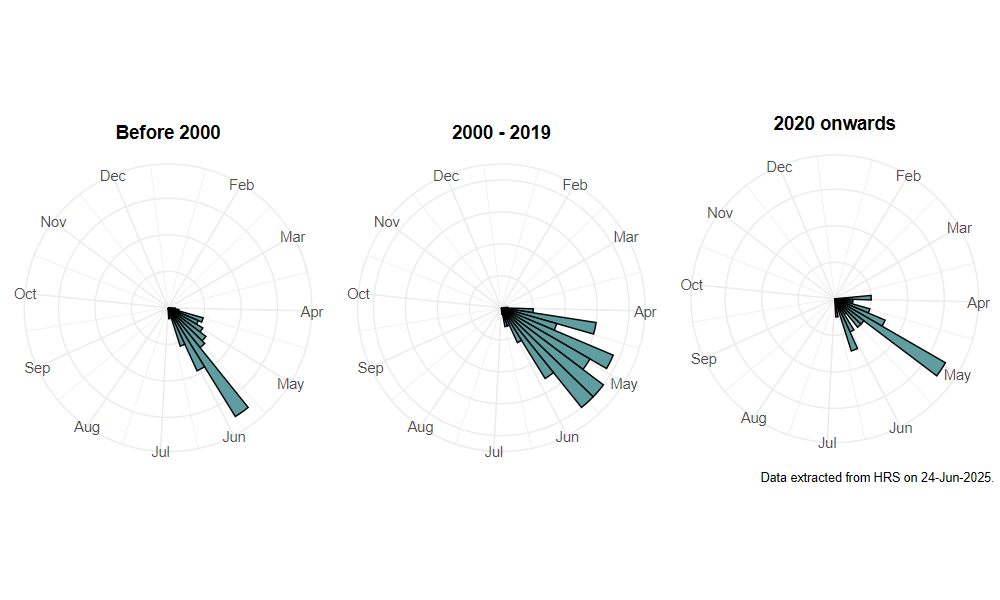Brachyopa pilosa Collin, 1939
Identification
Identification difficulty = 3. ![]()
![]() according to Ball & Morris, 20241
according to Ball & Morris, 20241
Synonymy
Prior to 1939 the only listed British species was B. bicolor. The additional species were not covered by a widely available key until Coe(1953)2. Consequently, records prior to 1953 must be based on verifiable specimens.
Biology
The larva filter feeds on microbes in sap runs. Adults fly from April to July in the vicinity of distinct sap runs on trunks or cut stumps. They may also be found on exposed trunks up until the point where fermenting sap has dried up and the bark becomes cracked and desiccated. Oak Quercus sp. and Beech Fagus sylvatica are preferred in southern England, but adults have been noted in association with fallen White or Grey Poplar Populus sp., stacked logs of Aspen Populus tremula and Birch Betula sp. It breeds in sap runs on Aspen in Scotland.
Flight period
The following plots show the number of unique records per week excluding those reported to be of immature stages.

Status
Lower Risk (Nationally scarce) - Ball & Morris, 20143. Notable - Falk, 19914. Rare (RDB3) - Shirt, 19875.
Distribution
There are two distinct populations; one in southern England that reaches as far north as Stoke on Trent, and west to south Wales; the other is centred upon the Moray Firth. Recent increases in records may be indicative of a northward expansion of the range of the southern population.

Trends
The following plots show the Frescalo TFactor vs year and a map of the rescaled frequency (all records) for the species.
-
Ball, S., & Morris, R. (2024). Hoverflies of Britain and Ireland. WILDGuides (3rd ed.). Oxford: Princeton University Press. ↩
-
Coe, R. (1953). Diptera: Syrphidae. Handbooks for the Identification of British Insects, 10(1), 1–98. ↩
-
Ball, S., & Morris, R. (2014). A review of the scarce and threatened flies of Great Britain. Part 6: Syrphidae. ( No. 9). Species status (pp. 1–130). Peterborough: JNCC. ↩
-
Falk, S. (1991). A review of the scarce and threatened flies of Great Britain. ( No. 39). Research and Survey in Nature Conservation (pp. 1–194). Peterborough: NCC. ↩
-
Shirt, D. (Ed.). (1987). Red Data Books: 2. Insects. Peterborough: NCC. ↩